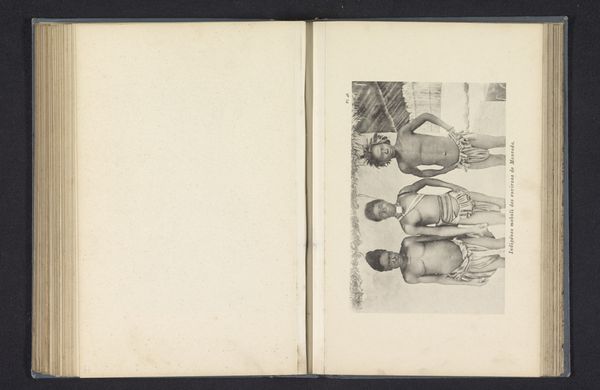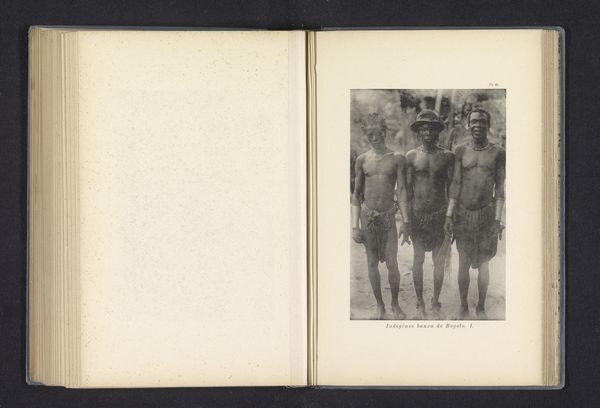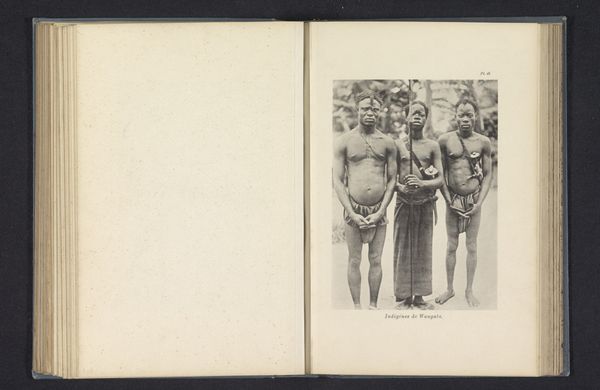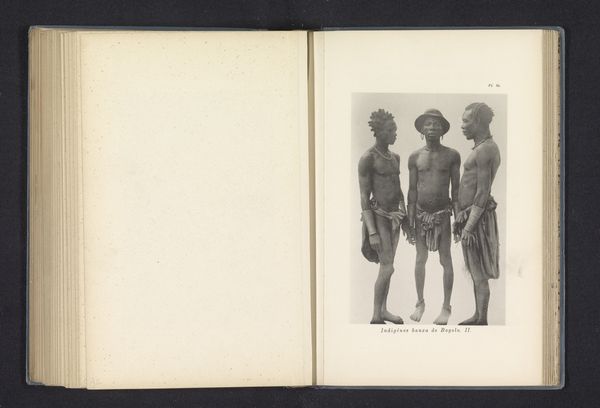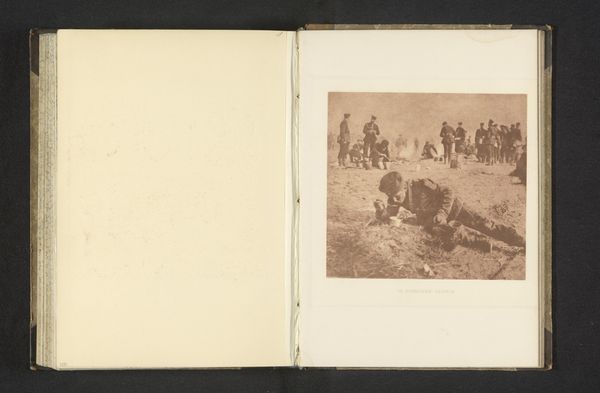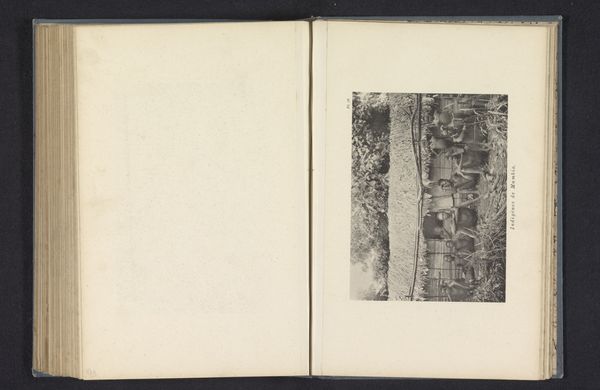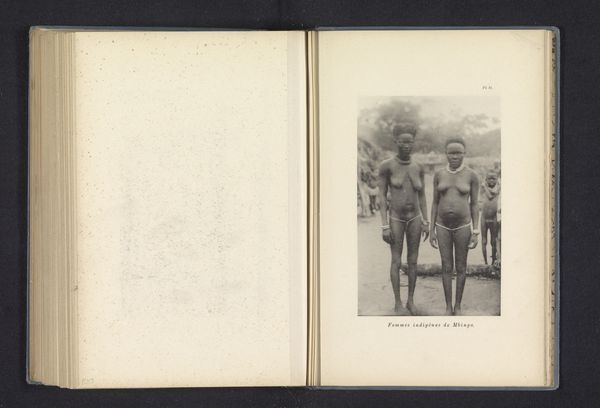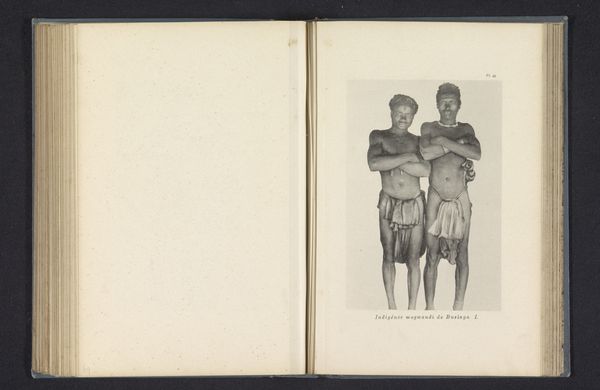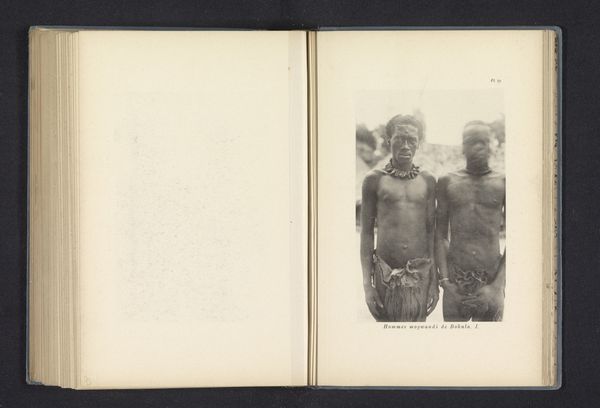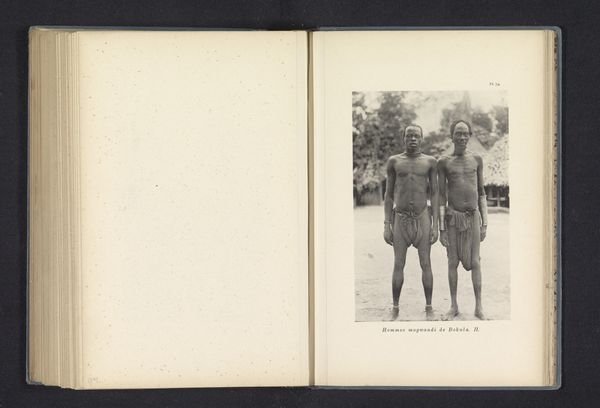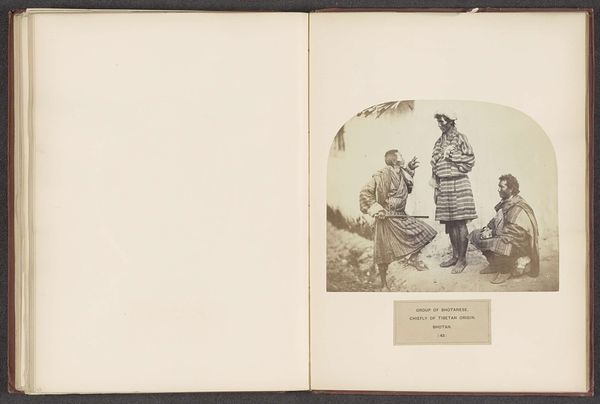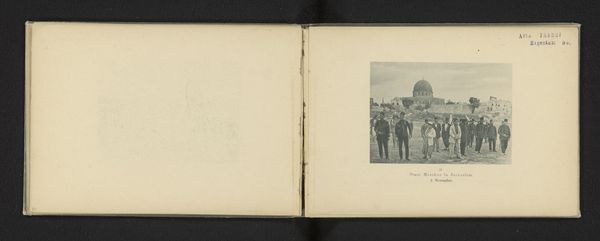
photography, gelatin-silver-print
#
portrait
#
african-art
#
photography
#
gelatin-silver-print
#
genre-painting
#
nude
Dimensions: height 162 mm, width 110 mm
Copyright: Rijks Museum: Open Domain
Editor: This gelatin-silver print, "Portret van twee vrouwen van de Bangala te Nieuw-Antwerpen," was taken by Franz Thonner in 1896. The starkness of the subjects and the documentary style gives it a very matter-of-fact feeling, even ethnographic. What cultural symbols stand out to you in this photograph? Curator: It's fascinating how a seemingly straightforward image can carry so much. The women themselves, their poses, the angle, and even the thatched structure behind them contribute to a complex reading. Notice how the photographer positioned them frontally. It is direct, yet impersonal. Their adornments, like the necklace on the right and the hair treatment on the left, suggest personal and cultural identity, marking belonging. But what narrative emerges when we juxtapose those with the objectifying gaze often present in early ethnographic photography? Editor: That's a great point! The adornments tell a story of cultural identity but also possibly emphasize perceived “otherness” when seen through a colonial lens. Is it a celebration or a capture? Curator: Precisely. This image lives within that tension. The structure— the thatched building— situates them in a specific context, anchoring them to their environment and their cultural space. How much does the framing of their bodies become a statement of dominance? Consider the absence of explicit contextual information besides what's visually apparent. Editor: It’s like the photograph is caught between being a portrait and an anthropological record, with a troubling power dynamic under the surface. Curator: Absolutely. And unpacking those layers reveals so much about both the subjects and the historical context in which the photo was created. It compels us to reflect on how cultural symbols can be interpreted in vastly different ways depending on perspective. Editor: I agree. Thanks, I'll definitely look at these images with more context going forward.
Comments
No comments
Be the first to comment and join the conversation on the ultimate creative platform.
